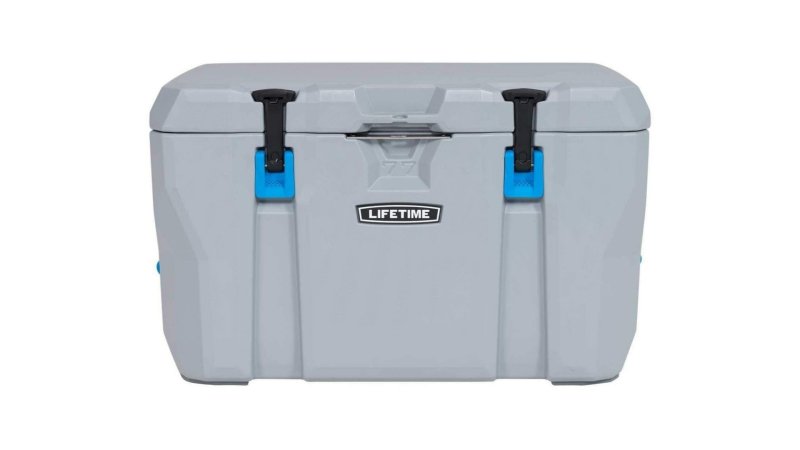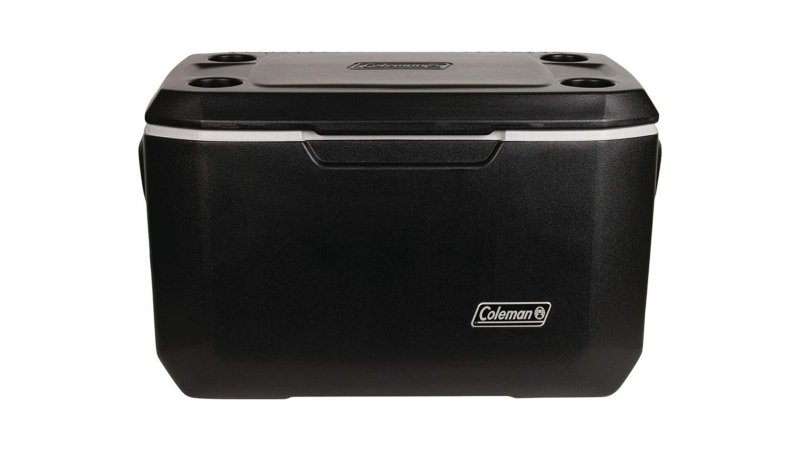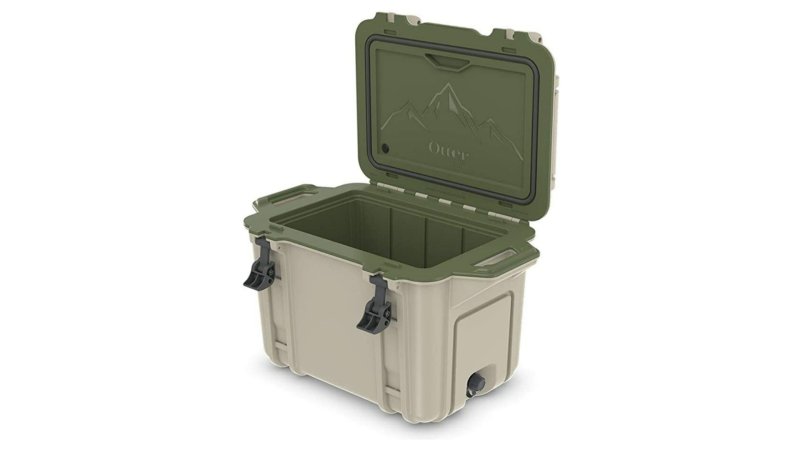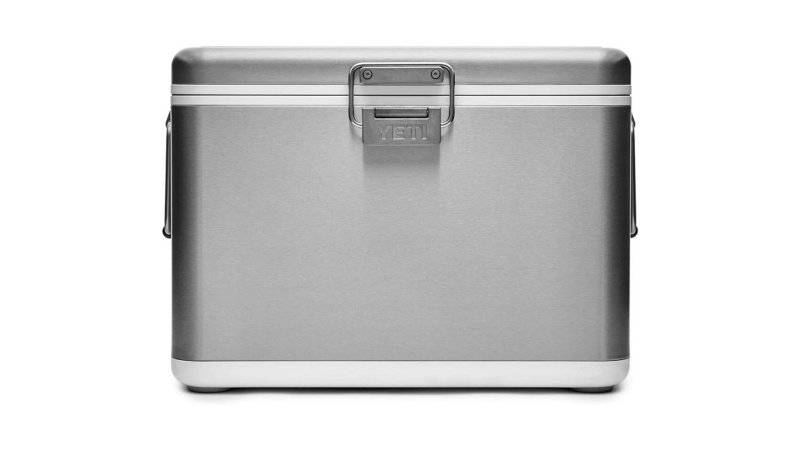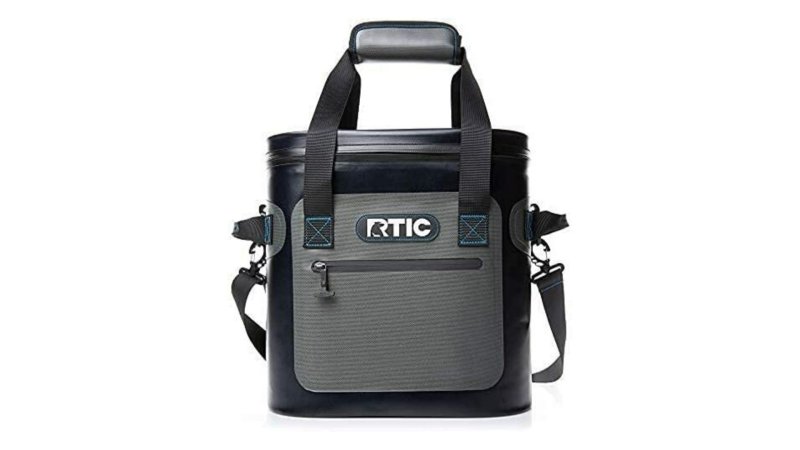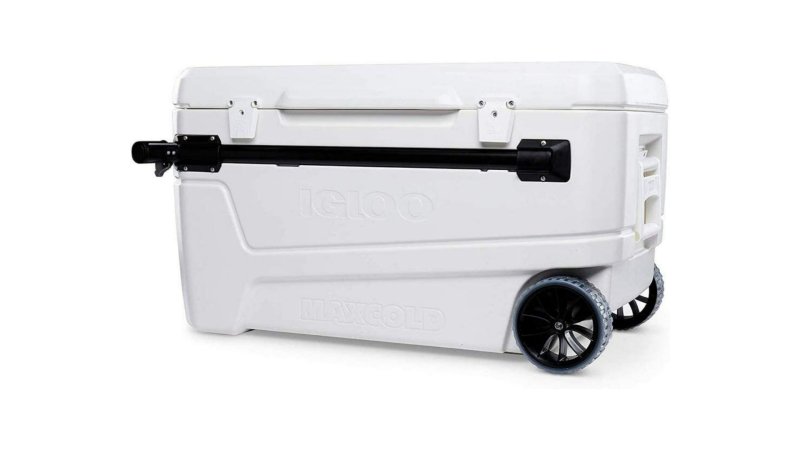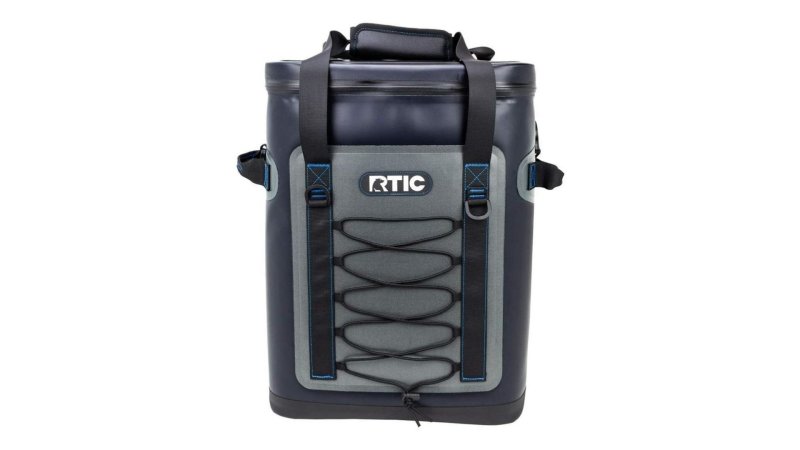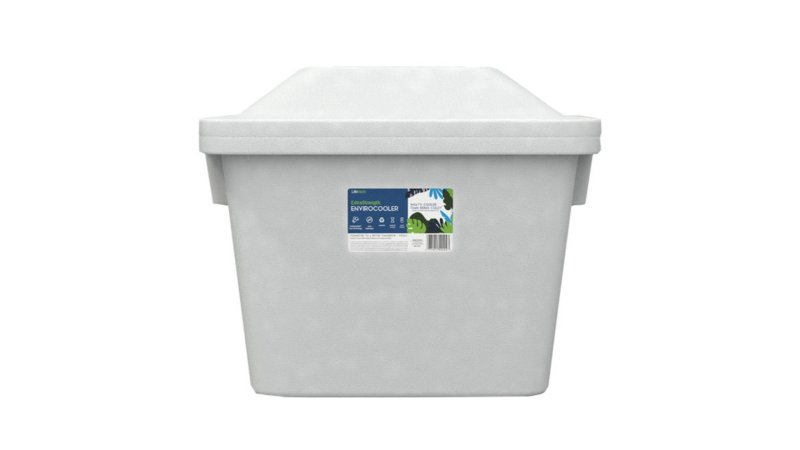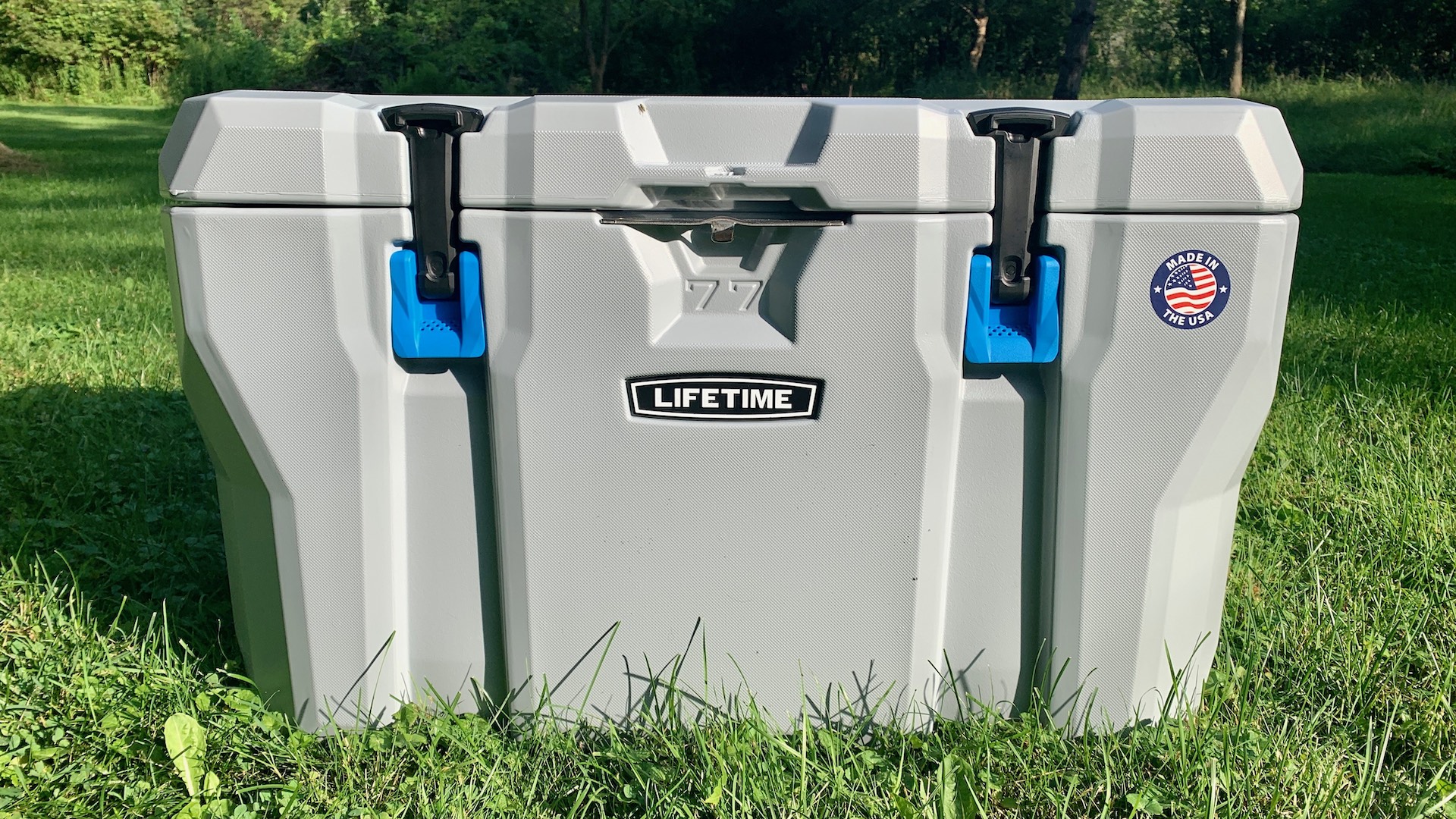

We may earn revenue from the products available on this page and participate in affiliate programs.
A solid cooler for camping can make a major difference. That idea cemented in my mind after I watched a video series about guys who took their overlanding Toyota Tacomas 500 miles across the desert without using paved roads, hotels, or restaurants. They just started driving with about a week’s worth of fuel and supplies. Imagine my surprise when they kicked off the first night with grilled steak and fresh vegetables washed down with cold beer.
I reflected on my own camping menu of Clif bars and jerky. A package of Ramen cooked over my Jetboil is the closest I get to a real meal in the woods. Camping can sure mean different things to different people. As I watched their steak sizzle on screen, I couldn’t help but think that I was making life way harder than it has to be.
The difference-maker––aside from motor vehicles––is a camping cooler. The only way to enjoy a fresh meal at your campsite is to keep your provisions cold until it’s time to cook. There are a few ways to do that, depending on your style of camping, but we set out to find a camping cooler for everyone. Let this gear guide be your first step toward living the good life.
Best Overall
Lifetime 77
Pros
- We love the 77-quart capacity
- Holds ice for up to nine days
- Heavy-duty components stand the test of time
- Priced below comparable alternatives
Cons
- Odd exterior shape can be awkward to pack
- Not as overbuilt as premium coolers
- Hinge rod can come loose and fall out
Product Specs
- Capacity (in quarts): 77
- Capacity (in cans): 96
- Claimed ice retention: Nine days
Best Value
Coleman Xtreme 5
Pros
- Five-day ice retention is totally attainable
- Light and easy to carry
- Strong enough to sit on
- Far better than the price suggests
Cons
- Thin shell and lightweight hinges raise durability concerns
- Lid seal has been known to leak
- Handles exhibit flex under load
Product Specs
- Capacity (in quarts): 70
- Capacity (in cans): 100
- Claimed ice retention: Five days
Editor’s Choice
OtterBox Venture 45
Pros
- Overbuilt and ready to take whatever you dish out
- Thick insulation provides excellent ice retention
- Customize with accessories from OtterBox
- Big-time quality in a midsize cooler
Cons
- Noticeably heavy compared to the alternatives
- Handles are bulky and don’t fold down
- Thick walls make this less compact than you might expect
Product Specs
- Capacity (in quarts): 45
- Capacity (in cans): 25
- Claimed ice retention: 14 days
Best High-End Cooler
Yeti V-Series
Pros
- Most rugged cooler here by far
- Stainless steel is sturdy and looks great
- Metal hinges are sure to outlast plastic ones
- Vacuum insulation is superior to foam
Cons
- Several times the cost of other premium coolers
- Yeti doesn’t provide an ice retention rating
- Not the easiest to carry
Product Specs
- Capacity (in quarts): 47
- Capacity (in cans): 46
- Claimed ice retention: Not specified
Best Soft Cooler
RTIC Soft Cooler
Pros
- Quality item that’s built to last
- Waterproof, sweat-proof, and floats
- Leakproof zippers prevent melted ice from escaping
- Available in multiple sizes
Cons
- Only stays cold for about a day
- Works noticeably better with ice packs than loose ice
- Zipper isn’t as beefy as the rest of the cooler
Product Specs
- Capacity (in quarts): not specified
- Capacity (in cans): 20
- Claimed ice retention: 24 hours
Best Rolling Cooler
Igloo Outdoor Sportsman 110
Pros
- Massive capacity is sufficient for long trips and large groups
- Sturdy handle support runs the full length of the cooler
- Priced extremely competitively given its size
- Drain spout is threaded to attach a hose
Cons
- Not as robust as higher-end coolers
- Exterior plastic is not as thick as we’d like
- Wheels are only helpful on smooth, hard ground
Product Specs
- Capacity (in quarts): 110
- Capacity (in cans): 168
- Claimed ice retention: Five days
Best Backpack Cooler
RTIC Backpack Cooler
Pros
- Excellent soft-sided build quality
- Room for 30 cans plus a bag of ice
- Padded shoulder straps and hip belt
- Available in tan with olive drab trim
Cons
- Zippers are a potential weak point
- Soft sides aren’t as strong as a hard cooler
- Expensive for its size
Product Specs
- Capacity (in quarts): Not specified
- Capacity (in cans): 30
- Claimed ice retention: Several days
Best Styrofoam Cooler
LifeMade Evirocooler
Pros
- Biodegradable foam decomposes in four years
- Lasts longer than a traditional styrofoam cooler
- Can be recycled after use
- Great size for day trips
Cons
- Least durable cooler on this list
- Capacity can be limiting
- Raised top isn’t great for stacking
Product Specs
- Capacity (in quarts): 22
- Capacity (in cans): 24
- Claimed ice retention: Not specified
Why you should trust us
Our staff is full of people who pursue all kinds of outdoor adventures. We’ve also got a few die-hard foodies. Combining our passions is only natural, and coolers allow us to do just that. We’ve reviewed plenty of gear that’s designed to elevate the camping experience, including sleeping bags, camping grills, and some of our favorite coolers. At the very least, you know we’re not about to let our beer get warm.
Types of coolers for camping
Coolers are pretty basic. They all use an outer shell and some kind of insulation to keep food and drinks cold. There’s still some room for variation, though, so it’s important to know what you’re getting into. Are premium coolers worth the upcharge? Will a good, old styrofoam cooler from the gas station do the trick? We’re here to answer life’s important questions.
Traditional coolers
If your idea of a cooler is a big rectangle with a flat lid and a few built-in cup holders, you’re not wrong. Most coolers look exactly like that and have for many years. It is the way. The reason most coolers fall into this category is simple: they work and they don’t have to cost a lot.
These are great for group camping trips, tailgating, and backyard barbeques. They come in all different sizes and hold temperatures low for hours or even days. Ice is cheap, so we recommend buying the biggest size you think you’re likely to use. One of these will ensure that you have safe, cold food for the whole group days into your camping trip.
Portable coolers
There are other options when carrying a full-sized cooler isn’t practical. Portable coolers allow you to take a few drinks or a single meal on the go. These can be totes or backpacks that are great for picnics and small outings. A lot of people use these for lunchboxes because they eliminate the need for a refrigerator.
Because of their small size, portable coolers don’t hold temperature as well as larger coolers. Their insulation is much thinner and it’s usually necessary to use blocky ice packs rather than loose ice that can fill the cooler evenly. They’re good for a few hours, but we wouldn’t use most of them for much longer.
Tubs and tanks
If you’ve been to a big cookout, you’ve probably seen big, open containers filled with ice. Back in the day, we used corrugated tin water troughs. Now, people use cooler tubs with insulated walls to keep drinks accessible and cold. These coolers have huge amounts of space and make it easy for people to grab and go.
Tubs and tanks have one serious drawback: they violate the closed-lid rule. Without a lid, they burn through ice much faster and are constantly being bombarded by the hot sun. They make up for this in sheer size. Because they’re so big, people can stuff a tremendous amount of ice inside and refill frequently.
Power coolers
If your style of camping takes you away from home for a long enough time, even the best cooler will let you down. If you can’t refill your ice, you’re out of luck––almost. Power coolers are effectively refrigerators that can be plugged into vehicles or generators (gas or solar) to stay cool indefinitely.
These are gaining popularity with car campers and overlanders because they allow people to enjoy meat, dairy, and cold drinks for weeks on end. Even when the power source is disconnected, they can hold their temperature for hours like a traditional cooler. This kind of luxury isn’t cheap, but it’s worth it to replace your beef jerky with freshly grilled steak.
Key features of coolers for camping
Shell
Any cooler that’s going to join you on a camping trip needs to be able to take a beating. Having the best insulation and tastiest food in the world won’t do you any good if the cooler cracks in half before you get the campfire hot. Some coolers achieve this with pliable plastic that absorbs impacts. Others ate a more heavy-duty approach with synthetic materials that are so overbuilt that you’re unlikely to damage them.
Some of the coolers on this list take another approach altogether. Soft-sided coolers are much less brittle than hard coolers, but they also don’t protect their contents against impacts very well. If you bump into a soft cooler it will be fine, but the food inside might end up absorbing the jolt.
Insulation
Insulation is the difference between a cooler and a box. Foam is the go-to for coolers across the price spectrum because it’s cheap, light, and effective. As long as foam insulation is encased in a strong shell, it can last indefinitely because there’s nothing to go wrong. Manufacturers used different kinds of foam, like inexpensive styrofoam and high-end closed-cell foam, but the principle remains the same.
What’s inside is what gives insulation its power. One common rule of thumb is to fill your cooler with two parts ice and one part air. That mixture should keep your food cold without freezing solid. As the ice melts, leave the water inside the cooler to get the most out of it.
Bonus features
One way cooler manufacturers differentiate their products is with extra features. Usually, this means adding a ruler on the lid for measuring fish, cupholders built into the lid to hold your drinks, or rubber padding on the handles for a more comfortable grip. Other common features are drain spouts and wheels.
One innovative cooler on our list is the OtterBox Venture 45. The Venture series includes attachment points where you can mount other OtterBox accessories like a side table, bottle opener, or hard case for things like utensils. We like the idea of being able to customize your cooler, and it wouldn’t surprise us to see more manufacturers jumping on the bandwagon.
Benefits of coolers for camping
Food safety
Believe it or not, frosty brews aren’t the biggest advantage to making a cooler part of your camping gear list. Your cooler’s first priority should be keeping food at a safe temperature. Meat and dairy products are the biggest concern, but other foods can also grow harmful bacteria or spoil if they aren’t kept cool.
The CDC recommends storing food below 40 degrees Fahrenheit. The range between 40 and 140 degrees presents the most favorable environment for bacteria to grow and spoil your food. Food poisoning isn’t just miserable, it can be life-threatening if you aren’t able to reach medical care fast enough. Keeping food cold until you’re ready to cook and storing leftovers properly is one way to keep your digestive tract running on time.
Camping experience
We’ve done our share of camping with only jerky, trail mix, and MREs to keep us going. That kind of stuff will keep you alive, but if you’re camping for fun it kind of defeats the purpose. If you have access to a vehicle of some kind, a cooler is probably the best way to upgrade your campsite.
The ability to keep food cold will allow you to trade in granola for bacon and eggs, and swap ramen for ribeye. This kind of thing isn’t practical for backpacking, but car camping presents the perfect opportunity to stoke a fire and grill over an open flame and under an open sky. We’re willing to bet that you’ll see a direct correlation between buying a cooler and scheduling more weekend camping trips.
Versatility
Most camping gear is pretty specialized. There aren’t a lot of other situations where you’d want to cook over a Jetboil or take an E-tool to the bathroom, after all. Coolers are an exception to that rule. Their versatility makes them more practical and easier to justify spending your money to get one.
Coolers are perfect for tailgating, outdoor concerts, and picnics in the park. We can’t think of a family reunion that hasn’t had two or three kicking around. They’re also nice to have around the house. Instead of making everyone at your backyard barbeque track through the house every time they need a drink, set your cooler on the patio for them. Keep it on hand in case of a power outage so you can preserve your cold food until the refrigerator comes back on. And here’s a pro tip: you can use a cooler to keep briskets warm until it’s time to eat.
Pricing considerations of coolers for camping
Less than $50
At the bottom of the camping cooler price range, you’re basically looking at disposable styrofoam coolers like the ones you’d find at the gas station. These are certainly usable and might be a cost-effective option if you only go camping once a year. We found one option that’s biodegradable, but most are pretty horrific for the environment.
Styrofoam coolers can hold ice all day if they’re packed right, but don’t expect much more than that. The ones that are used to ship cold food are packed with a ton of ice compared to the actual contents. They’re also not very durable, so don’t expect more than one or two uses out of one.
Between $50 and $150
We’re pretty happy with the midrange coolers available in this price range. There’s a decent selection in terms of size and features. Most of these coolers are good for a few days worth of ice retention and can last several years if you take care of them.
Midrange coolers do a great job and offer a lot of bang for the buck, but they aren’t meant to take much abuse. Tailgating and backyard cookouts are in their wheelhouse. Car camping is no problem. Extended overlanding will stretch these coolers to the limit, especially in hot weather. There’s no reason to avoid them as long as you’re realistic about what you plan to use them for.
More than $150
Coolers that break the $150 mark are what we consider premium coolers. They include innovative features, quality materials, and excellent design. They can come in the form of a high-volume traditional cooler, a midsized cooler, or a backpack cooler. Many cost more than $300 and we’ve seen plenty encroach on $1,000.
At this level, you can expect a rugged shell that’s unfazed by riding around on an ATV or being drug around a campsite. Insulation tends to be more efficient and ice retention is measured in days, if not weeks. Some people argue that these coolers are overpriced and sold on name recognition. That may be true to some degree, but we can’t dispute their effectiveness.
How we chose our top picks
First and foremost, coolers need to keep a stable internal temperature for a long time, regardless of what’s going on outside. We focused on established brands with strong records of success when it comes to building coolers that work. Camping coolers also need to be tough. We weeded out the lightweights because you need to know that your cooler isn’t going to fall apart on the way to the campsite or crack when you set it down on the rocky ground. We also wanted to find a nice variety in terms of size and price. What’s left is a list of the best camping coolers money can buy.
FAQs on coolers for camping
You’ve got questions, Task & Purpose has answers.
Q. Why is bringing a cooler important?
A: Coolers are your best bet for keeping drinks cool during the summer. They’re also critical if you bring raw meat to cook at your campsite. Meat and dairy need to be refrigerated to prevent foodborne illness. We recommend throwing in a thermometer so you can monitor the interior temperature.
Q. What’s the best way to fill a cooler?
A: Pack your food and drinks first. It’s not a bad idea to put packages of uncooked meat on the bottom, just in case they leak. Cold air is heavy, so pack ice on top of your food to get the most out of it. Don’t skimp on the ice, either. Stack it as thick as you can.
Q. Should I drain the water from my cooler?
A: This is a hotly contested debate, but we’re with Adventure Journal on this one––don’t do it. As long as the water is cooler than the ambient air, it’s less of a problem than the air that will take its place when you drain it.
Q. How can I take care of my camping cooler?
A: You obviously want to protect your cooler against impacts. In between uses, give it a thorough scrubbing with mild dish soap and warm water. That should be all it takes to keep your cooler fresh and ready for the next trip.
Q. Are camping coolers bear-proof?
A: No. Cars aren’t even bear-proof.
Q. How can I keep my cooler cold longer?
A: Coolers do a great job of keeping their internal temperature low, but they can’t actively lower it. To get the most out of your cooler, pack lots of ice and don’t open the lid any longer than is necessary.
Our gear section
Scott Murdock is a Task & Purpose commerce writer and Marine Corps veteran. He’s selflessly committed himself to experiencing the best gear, gadgets, stories, and alcoholic beverages in the service of you, the reader.
